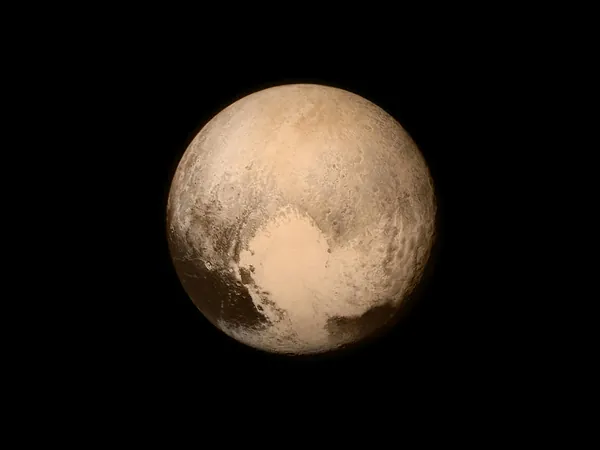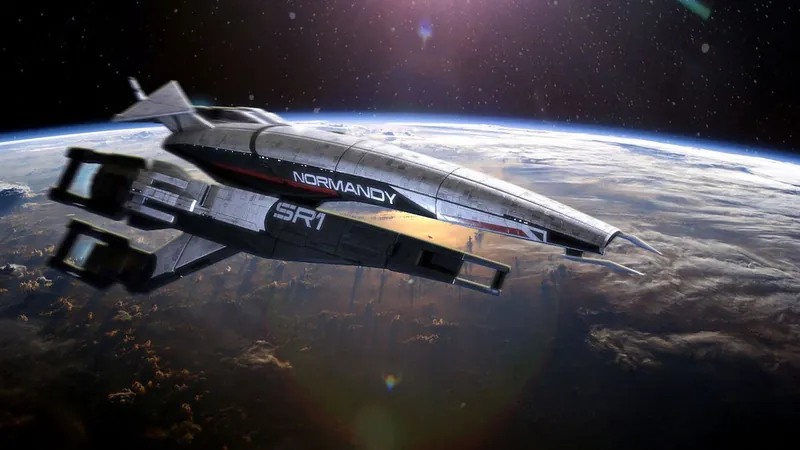
Will the Persephone Mission Unravel Pluto's Deepest Secrets? Experts Believe It Could!
2024-11-14
Author: Jacques
Pluto may have lost its status as a full-fledged planet, but it undeniably captures the imagination of scientists and space enthusiasts alike. The dwarf planet continues to mystify researchers, especially after the wealth of data collected by NASA's New Horizons mission in 2015. While New Horizons marked a milestone in our understanding of the Pluto system, it left behind a host of questions—questions that a new mission proposed by a collaborative team of scientists from various universities and research institutes aims to address: meet Persephone.
The New Horizons spacecraft zipped past Pluto as it was officially classified as part of the Kuiper Belt, gathering valuable insights into the dwarf planet and its largest moon, Charon. However, the data collected has led scientists to crave deeper understanding, particularly about the intriguing surface features they encountered but could not fully explore.
The Persephone mission is centered around four pivotal scientific questions outlined in a comprehensive 2021 paper:
1. How has the population of the Kuiper Belt evolved over time?
2. What are the unique particle and magnetic field environments present in the Kuiper Belt?
3. In what ways have the surfaces of Pluto and Charon changed since our last visit?
4. What lies beneath the surface—specifically, what are the internal structures of Pluto and Charon?
Among these queries, the mystery of Pluto’s internal structure is especially captivating. Evidence suggests it may harbor a subsurface ocean, despite its distant orbit around the Sun. Features like the vast ice plain known as Sputnik Planitia hint at geophysical activity that might be connected to this hypothesized ocean. Yet, current data remains insufficient to confirm this fascinating possibility.
Persephone is designed to provide the answers we seek. However, the journey is not without complications; current propulsion technologies and the laws of orbital mechanics indicate that a mission could last upwards of 50 years. Persephone's operational timeline consists of an extensive 28-year cruise phase, followed by a three-year exploration of Pluto and Charon, with potential bonus voyages to other Kuiper Belt objects that could illuminate the characteristics of various celestial bodies in this remote region.
Interestingly, the prospect of deploying advanced nuclear electric propulsion systems could expedite the mission, potentially shaving off two years from the travel time even with a heavier payload. Although such technology is still in the developmental phase, hopes are high for a possible launch in 2031 aboard the Space Launch System (SLS) rocket.
As for the scientific equipment, Persephone will carry a potent suite of sensors designed to maximize data collection on everything it encounters. From high-resolution cameras and spectrometers to radar, magnetometers, and altimeters, the spacecraft will be armed with the tools necessary to capture the dynamic essence of both Pluto and Charon over its critical three-year observational period.
Remarkably, one of the mission’s differentiators is its design as an orbiter rather than just a flyby, allowing for an extended stay around the dwarf planet. This enables Persephone to conduct comprehensive studies on the planetary bodies’ surface dynamics and evolution, securing the mission's goal to unlock the secrets of this enigmatic world.
Are you ready to see Pluto in a whole new light? The Persephone mission is poised to redefine our understanding of the last frontier in our Solar System! Stay tuned as we continue to explore the wild mysteries that lie beyond the Kuiper Belt.









 Brasil (PT)
Brasil (PT)
 Canada (EN)
Canada (EN)
 Chile (ES)
Chile (ES)
 España (ES)
España (ES)
 France (FR)
France (FR)
 Hong Kong (EN)
Hong Kong (EN)
 Italia (IT)
Italia (IT)
 日本 (JA)
日本 (JA)
 Magyarország (HU)
Magyarország (HU)
 Norge (NO)
Norge (NO)
 Polska (PL)
Polska (PL)
 Schweiz (DE)
Schweiz (DE)
 Singapore (EN)
Singapore (EN)
 Sverige (SV)
Sverige (SV)
 Suomi (FI)
Suomi (FI)
 Türkiye (TR)
Türkiye (TR)